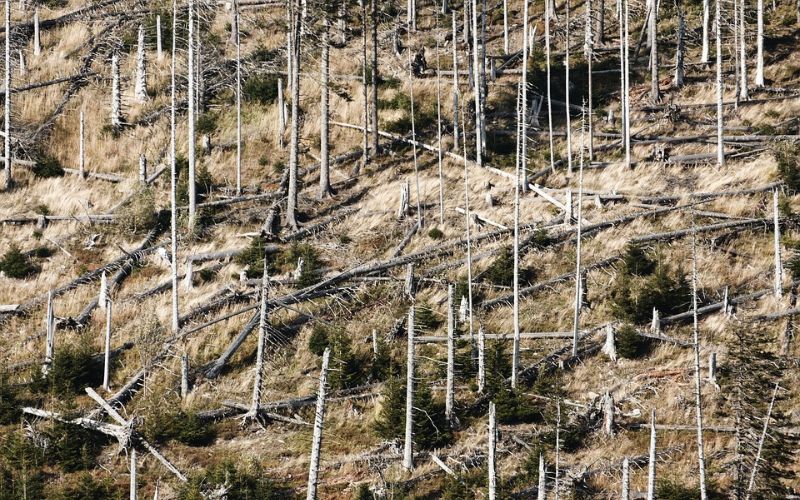These are just three examples why forests are under huge pressure. There are no silver bullets to change this. However, our Linda Forest solution provides analysis at scale and at product-grade quality. This can help to understand, respond and improve forest health.
The Bark Beetle Disaster
Bark beetles were part of the forest ecosystem in balance. They would mostly attack weak trees and outbreaks would be limited. Cold winters would counterbalance the population growth of beetles over the summer. No more! Three forces of climate change have tilted the forest ecosystem of temperate and boreal forests:
- Drier and hotter summers increase the share of stressed and weakened trees substantially
- Warmer winters allow more bark beetles to survive winter, leading to larger populations in the Spring
- Stronger storm events lead to larger storm damages, providing breeding grounds for beetles.
CollectiveCrunch is developing Linda Planet, a solution that predicts bark beetle outbreaks. The research community has spent immense resources to understand underlying drivers and how to identify bark beetle outbreaks. Building on these insights and taking in much more holistic data sources, we are building a solution that predicts bark beetle risks and thereby allows proactive counter measures.
Loss of Biodiversity
Forests are extremely diverse ecosystems that provide habitat for many plant and animal species. Moreover, forests provide significant ecosystem services such as the absorption of CO2 and the filtering of rainwater. The World Wildlife Fund estimates that between 1970 and 2014 forest biodiversity has halved – a trend that is estimated to have accelerated since.
Tracking biodiversity at the species level at scale (say of insects and microorganisms) is not possible with the tools we have. Currently we have rudimentary sampling of species done by researchers, and rudimentary tracking of forests (in the sense of forest yes/no). Essentially biodiversity is not tracked in a meaningful way even at the regional level.
Linda Planet tracks tree species and dead trees. This provides an accurate tracking of biodiversity at scale, based on tree species mix and health. Loss in biodiversity and degradation of forest health can be tracked and issues pinpointed for corrective action.
“Unreal” Carbon Credits
A significant part of carbon credits concern forestry, either in afforestation or improved forest management. The idea is to steer funding towards projects that sequester carbon from the atmosphere into trees. Investors, corporations (the so called voluntary players / market) work with project managers to structure proposals that are approved (well, the majority never gets approved) by standards and put into place by the project managers’ local teams.
Anybody in this field is aware of the urgency of climate action. Strangely, they run a process that is essentially based on the state-of-the-art of 2002, when the Kyoto protocol was agreed. Before carbon credits “get real” they are approved by auditors in a manual process every 5 years or so. This is essentially an expensive, infrequent and inaccurate process. For 5 years investors fly blind and hope for the best, then they pay for an expensive process that isn’t particularly accurate to be given vague and unverifiable information. This process is called verification. But that’s not all. The baselines, essentially the assumptions with which the carbon credits are calculated are flawed. The respected Guardian headlines: “Revealed: more than 90% of rainforest carbon offsets by biggest certifier are worthless, analysis shows” in early 2023.
The sad truth is that the processes of verification and baselines are totally outdated. Existing technology can do this better, cheaper and more accurate. It is time that the professionals working in this field put in place a better process that makes use of technology to give investors and the world what they need.
It is ironic that the very community that emphasizes the urgency of climate action is so incredibly slow to make use of the tools that can solve their biggest problems.




